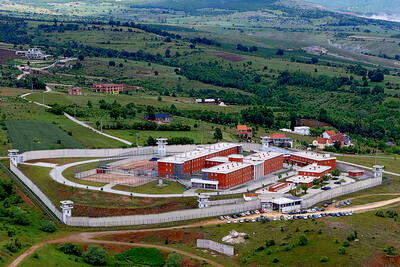Scientists have grown miniature human brains in test tubes, creating a “tool” that will allow them watch how the organs develop in the womb and, they hope, increase their understanding of neurological and mental problems.
Just a few millimeters across, the “cerebral organoids” are built up of layers of brain cells with defined regions that resemble those seen in immature embryonic brains.
The scientists say the organoids will be useful for biologists who want to analyze how conditions such as schizophrenia or autism occur in the brain; though these are usually diagnosed in older people, some of the underlying defects occur during the brain’s early development.

Photo: EPA / Institute of Molecular Biotechnology / Madeline Lancaster
The organoids are expected also to be useful in the development and testing of drugs. At present this is done using laboratory animals or isolated human cells; the new organoids could allow pharmacologists to test drugs in more human-like settings.
Scientists have previously made models of other human organs in the lab, including eyes, pituitary glands and livers.
In the latest work, researchers at the Institute of Molecular Biotechnology, in Vienna, Austria, started with stem cells encouraged to grow into brain cells in a nourishing gel-like matrix, which recreated conditions similar to those inside the human womb.
After several months the cells had formed spheres measuring about 3mm to 4mm in diameter.
“The cerebral organoids display discrete regions that resemble different areas of the early developing human brain. These include the dorsal cortex identity — the dorsal cortex is the largest part of the human brain — they also include regions representing the ventral forebrain and even the immature retina,” said Madeline Lancaster, who was first author of the paper published in Nature magazine on Wednesday.
Juergen Knoblich, who was part of the team that created the organoids, said that tests on the brain cells in the structures showed that they were functional.
“Previous models were pieces of small tissue that aggregated to a decent size but there was no success so far in generating something that would resemble the cortex in a particular stage of development,” he said.
At the moment the structures did not grow larger than a few millimeters in the culture dishes because nutrients and oxygen could not reach into the center of the organoids as they grew. To grow much bigger the organoids would need to be equipped with a blood supply of some kind that could feed their centers.
However, he said the organoids were unlikely to reach the complexity required to model cognition or any other higher brain function.

Packed crowds in India celebrating their cricket team’s victory ended in a deadly stampede on Wednesday, with 11 mainly young fans crushed to death, the local state’s chief minister said. Joyous cricket fans had come out to celebrate and welcome home their heroes, Royal Challengers Bengaluru, after they beat Punjab Kings in a roller-coaster Indian Premier League (IPL) cricket final on Tuesday night. However, the euphoria of the vast crowds in the southern tech city of Bengaluru ended in disaster, with Indian Prime Minister Narendra calling it “absolutely heartrending.” Karnataka Chief Minister Siddaramaiah said most of the deceased are young, with 11 dead

By 2027, Denmark would relocate its foreign convicts to a prison in Kosovo under a 200-million-euro (US$228.6 million) agreement that has raised concerns among non-governmental organizations (NGOs) and residents, but which could serve as a model for the rest of the EU. The agreement, reached in 2022 and ratified by Kosovar lawmakers last year, provides for the reception of up to 300 foreign prisoners sentenced in Denmark. They must not have been convicted of terrorism or war crimes, or have a mental condition or terminal disease. Once their sentence is completed in Kosovan, they would be deported to their home country. In

Brazil, the world’s largest Roman Catholic country, saw its Catholic population decline further in 2022, while evangelical Christians and those with no religion continued to rise, census data released on Friday by the Brazilian Institute of Geography and Statistics (IBGE) showed. The census indicated that Brazil had 100.2 million Roman Catholics in 2022, accounting for 56.7 percent of the population, down from 65.1 percent or 105.4 million recorded in the 2010 census. Meanwhile, the share of evangelical Christians rose to 26.9 percent last year, up from 21.6 percent in 2010, adding 12 million followers to reach 47.4 million — the highest figure

LOST CONTACT: The mission carried payloads from Japan, the US and Taiwan’s National Central University, including a deep space radiation probe, ispace said Japanese company ispace said its uncrewed moon lander likely crashed onto the moon’s surface during its lunar touchdown attempt yesterday, marking another failure two years after its unsuccessful inaugural mission. Tokyo-based ispace had hoped to join US firms Intuitive Machines and Firefly Aerospace as companies that have accomplished commercial landings amid a global race for the moon, which includes state-run missions from China and India. A successful mission would have made ispace the first company outside the US to achieve a moon landing. Resilience, ispace’s second lunar lander, could not decelerate fast enough as it approached the moon, and the company has